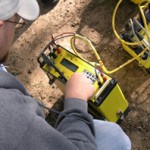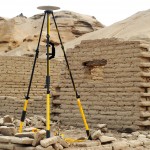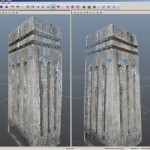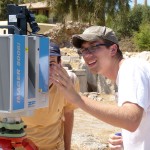The Geospatial Methods & Visualization (GMV) site has been developed to serve as a source of workflows for data acquisition and processing – largely of “unorganized” 3D data from sources such as photogrammetry, laser (and other) scanning and related technologies. These pages have been developed as part of the NSF funded CI-TRAIN project. The CI-TRAIN project is a partnership of institutions of higher education in Arkansas and West Virginia to transform the practice of information technology services for enabling scientific discovery. The CI-TRAIN project is a partnership that builds on common research in nanoscience and geosciences and leverages these domain areas to research and complementary expertise in high performance and graphic computing.
Early in the CI-TRAIN project it became clear that while access to the range of instruments provided through the project was essential, an equally critical element was to provide the access to the knowledge base that is needed to effectively utilize these devices. While there are a number of excellent tutorials and manuals available from the commercial vendors, as well as other resources from the user community, they frequently do not focus on the complex workflows that are necessary for effective field use and data processing of the acquired data. It was clear that this was an important limitation to the widespread adoption of these devices and, more importantly, the growth of high quality research data sets.
Even where detailed documentation was available it was frequently difficult to focus in on the essential documentation elements needed. The Geospatial Methods & Visualization (GMV) site has been developed to address this need. It consists of a substantial number of 3D data acquisition and processing workflows that are cross-indexed so that the necessary workflow can be identified.
 More information on CI-TRAIN is available at www.ci-train.org
More information on CI-TRAIN is available at www.ci-train.org
 Geophysics
Geophysics GIS / Remote Sensing
GIS / Remote Sensing GPS
GPS Modeling
Modeling Photogrammetry
Photogrammetry Photography Basics
Photography Basics Scanning
Scanning